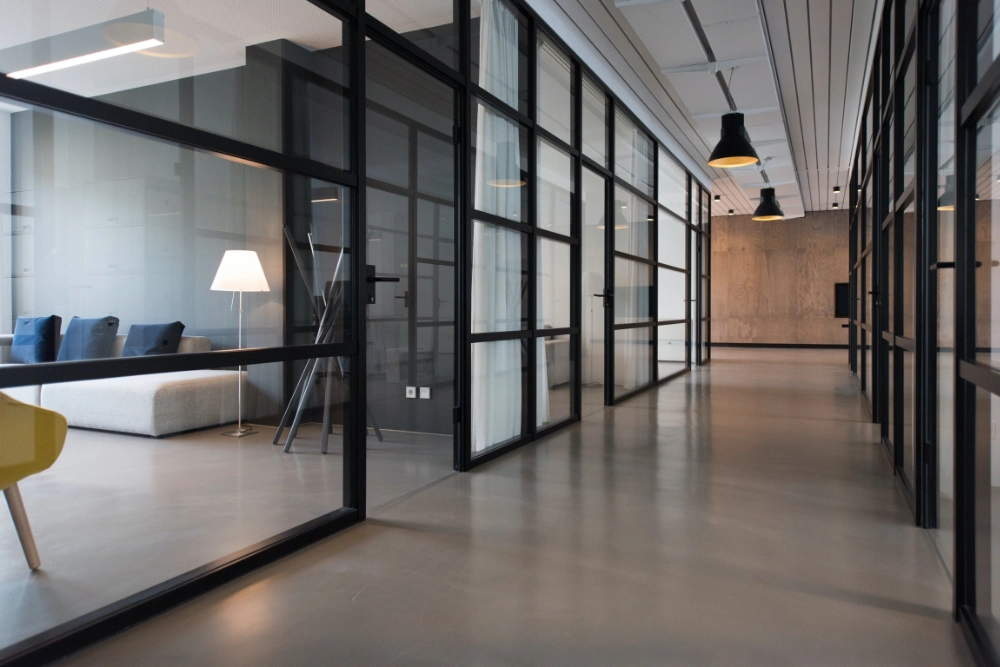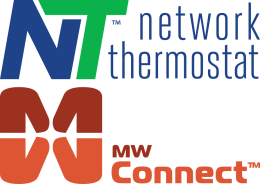
In the ever-evolving landscape of technology, the integration of smart devices into various environments has become a norm rather than an exception. Smart thermostats, once primarily associated with residential spaces, have now made their way into commercial settings, offering enhanced control, energy efficiency, and convenience. For members of the Custom Electronic Design & Installation Association (CEDIA), delving into the realm of commercial smart thermostat integration can open up new avenues for business growth and innovation.
The Shift Toward Commercial Smart Thermostats
The adoption of smart thermostats in commercial spaces is driven by the desire for efficient energy management, improved occupant comfort, and cost savings. In most cases, heating, ventilation, and air conditioning (HVAC) systems account for most of a commercial building's energy consumption. By integrating smart thermostats, facility managers gain the ability to monitor and control HVAC systems remotely, optimize temperature settings based on occupancy patterns, and implement energy-saving strategies.
Choosing the Best Smart Thermostat for Commercial Buildings
Selecting the appropriate smart thermostat for a commercial space is crucial to ensure compatibility, reliability, and operational flexibility. The best-connected thermostat for commercial buildings goes beyond mere temperature control—it should offer features such as remote sensor capabilities, and replacement of or integration with existing building automation systems. A notable player in this arena is Network Thermostats (NetX), a company that specializes in commercial-grade smart thermostats with a robust sensor network, trending data, and simultaneous integration with building management systems.
NetX: Elevating Smart Commercial Thermostat Power
With over 30 years of experience, NetX is a prominent solution provider of commercial smart thermostats. By incorporating advanced features and connectivity options, NetX bridges the gap between residential smart thermostats and commercial building automation system (BAS) controls. The company's continued commitment to meeting the unique demands of commercial spaces led to the development of thermostats that cater to the needs of building owners and managers.
One of NetX's standout features is the integration of Modbus TCP/IP and BACnet-IP protocols into their commercial-grade smart thermostats. These protocols are widely used in commercial building automation systems, allowing for seamless communication between different devices and systems within a commercial building. This enables NetX thermostats to easily integrate with the existing BAS ecosystem, enhancing the efficiency and effectiveness of overall operations.
Unleashing the Power of Remote Sensor Capabilities
A distinguishing feature of NetX's smart thermostats for commercial use is their availability of multiple remote sensors for every thermostat. Commercial spaces often have varying temperature zones, and a single thermostat may not accurately represent the temperature conditions throughout the entire area. Strategically placed indoor remote sensors relay real-time temperature and humidity data to the thermostat, enabling precise control and adjustments. This capability ensures optimal comfort for occupants during occupied hours. NetX’s commercial ecosystem also allows for supply and return air sensing, water leak detection, freezer and cooler monitoring, and many other sensor scenarios.
Step-by-Step Integration Process for CEDIA Members
For CEDIA members looking to expand their expertise into the commercial smart thermostat market, here's a step-by-step guide:
Understanding Commercial Needs:
Get familiar with the unique requirements of commercial spaces. This includes comprehending the types of HVAC systems, occupancy patterns, and energy management goals. We are here to help you understand specific requirements.
Exploring NetX Solutions:
Research NetX's range of commercial smart thermostats. Gain an in-depth understanding of their features and use as a stand-alone HVAC control system, compatibility with building automation systems, and remote sensor capabilities.
Training and Certification:
Look for training opportunities offered by NetX or other relevant organizations. Acquire the necessary certifications to demonstrate your expertise in commercial thermostat deployment.
Needs Assessment:
Engage with potential commercial clients to assess their specific needs and challenges. Propose solutions that align with their energy efficiency goals and operational requirements.
System Design and Integration: Utilize your CEDIA expertise to design a comprehensive smart thermostat integration plan. Ensure that the selected devices seamlessly integrate with existing building systems.
Installation and Configuration:
Execute the installation process meticulously, considering the placement of remote sensors, wiring, and connectivity to building networks. Configure the smart thermostats according to the client's preferences.
Testing and Optimization:
Thoroughly test the integrated system, making necessary adjustments to ensure accurate temperature control and seamless communication between devices.
Client Training:
Provide training to the client's facility management team on how to operate and manage the newly integrated smart thermostats effectively.
Post-Installation Support:
Offer ongoing support and maintenance services to address any technical issues or updates that may arise.
Conclusion
As the demand for smart building solutions continues to rise, CEDIA members have a unique opportunity to expand their expertise beyond residential spaces. Commercial smart thermostat integration, facilitated by NetX, presents a promising avenue for growth. By combining their knowledge of custom electronic design and installation with the capabilities of advanced smart thermostats, CEDIA members can play a pivotal role in optimizing energy efficiency, comfort, and operational efficiency within commercial buildings.



